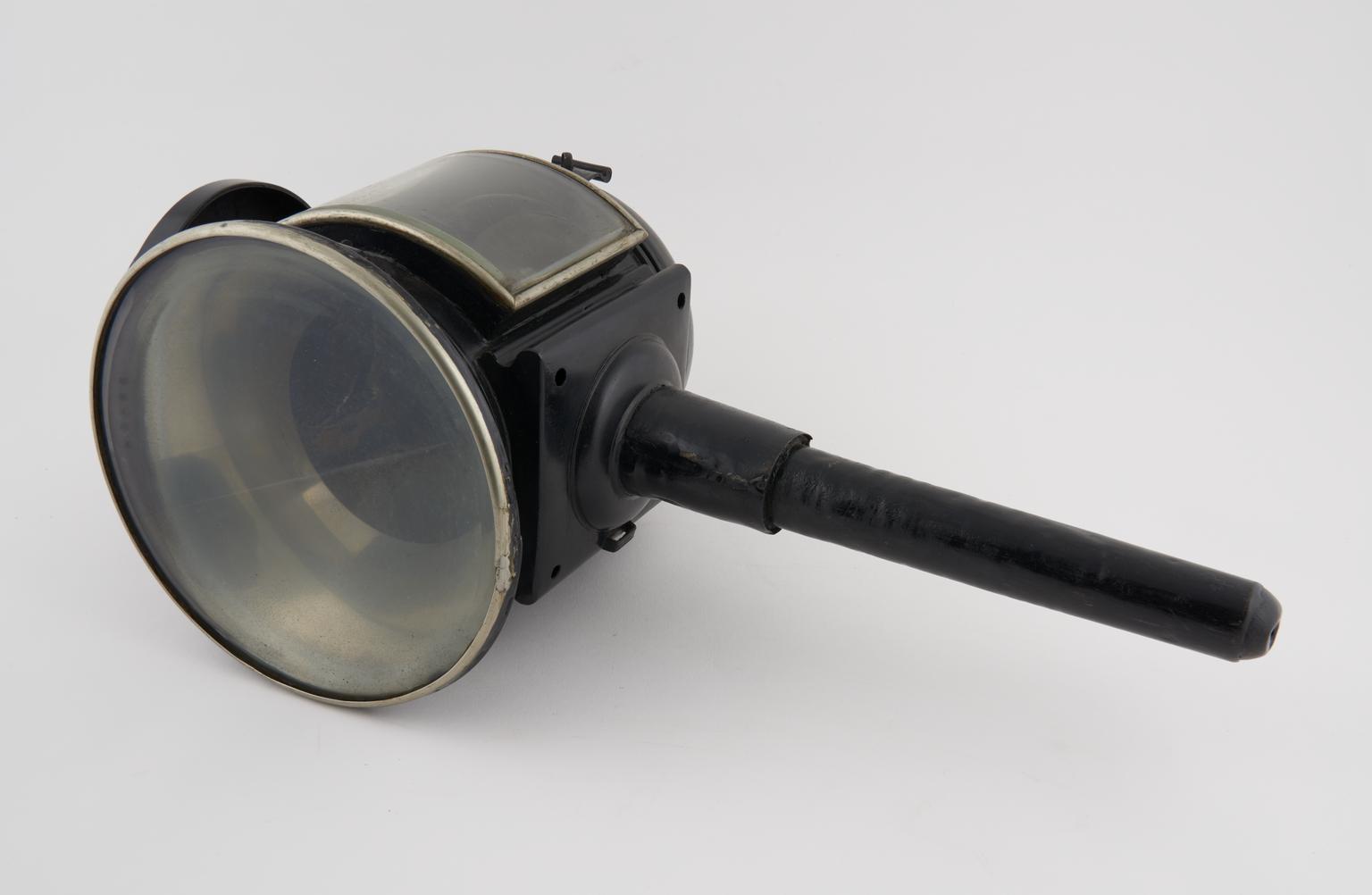
Hansom Cab, late 19th century
This Hansom cab was built between 1887-1900 by Forder Bros and Co in Wolverhampton. It is a two wheeled, one horse, enclosed carriage that could carry up to two passengers, with a single elevated driver's seat positioned at the back of the carriage.
The box of cab has folding wooden footguards which covered the feet and legs, alongside a retractable front window. At the top of the carriage is a trapdoor controlled by the driver, as well as a lever which controls the retractable front windows and footguards. The box and undercarriage of the cab has been painted in traditional (but not original) green and black. The words, “Licensed to Carry Two Persons” are found in gold lettering on the lower rear part of the cab.
The upholstery in the interior of the cab is a dark green and black leather, and above the passenger seats is a brass oval plate with one of the vehicle’s two cab numbers (4209). The other cab number (5905) is found on the axle and the front of the footwell.
The cab is suspended on two semi-elliptic side springs under the front step flooring and at the back by the shackles. On the underside of the cab is a retractable metal rod and foot which was used to take the weight of the cab off the horse when the cab was stationary or parked.
More
The hansom cab was developed in 1834 by Joseph Hansom whilst he lived in Hinckley, Leicestershire, before being modified by various other coachmakers such as John Chapman (who patented his own version in 1836). The patent was bought by the coachmakers Forder and Co (based in Wolverhampton and London) during the 1870s. They would remain the primary producers of Hansom cabs until their decline in popularity in the early 1900s with the introduction of motor taxis.
The most iconic feature of the hansom’s design is its elevated driver’s seat, which was positioned at the back of the vehicle rather than at the front, giving the cab a low centre of gravity. This design made the hansom cab agile and manoeuvrable, whilst also light enough to be pulled by a single horse. The Hansom cab consequently outcompeted and replaced many other types of cabs, notably the Hackney cab, which bulkier and subsequently required two horses, making it more expensive to use.
Passengers would give instructions and destinations by talking to the driver through a trapdoor on the roof of the cab, and the driver could in turn receive payment through this opening. The driver also had a lever which controlled footguards and retractable front window for their passengers, preventing people from running without paying.
Reaching peak popularity at the end of the 19th century, the Hansom cab has become ubiquitous with Victorian society, and is frequently featured in Victoria-era fiction and non-fiction. The Hansom was the cab of choice for legendary private detective Sherlock Holmes, promptly delivering him through the traffic ridden streets of London to crime scenes.
- Measurements:
-
overall: 2450 mm x 1820 mm x 4100 mm,
- Materials:
- wood (unidentified) , metal (unknown) , paint , leather , rubber (unidentified) , textile and glass
- Object Number:
- 1939-357 Pt1
- type:
- hansom cab
- Image ©
- The Board of Trustees of the Science Museum








